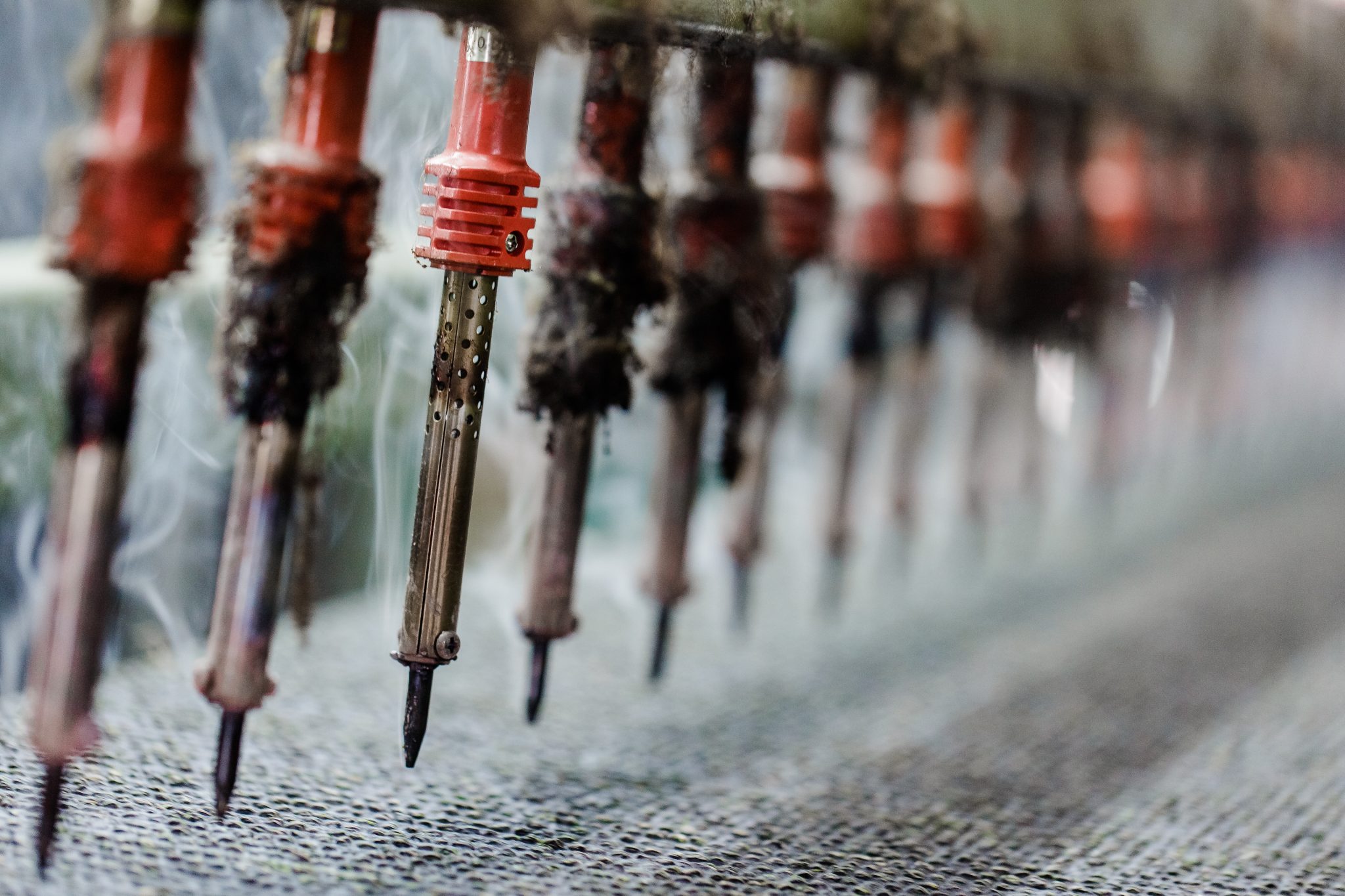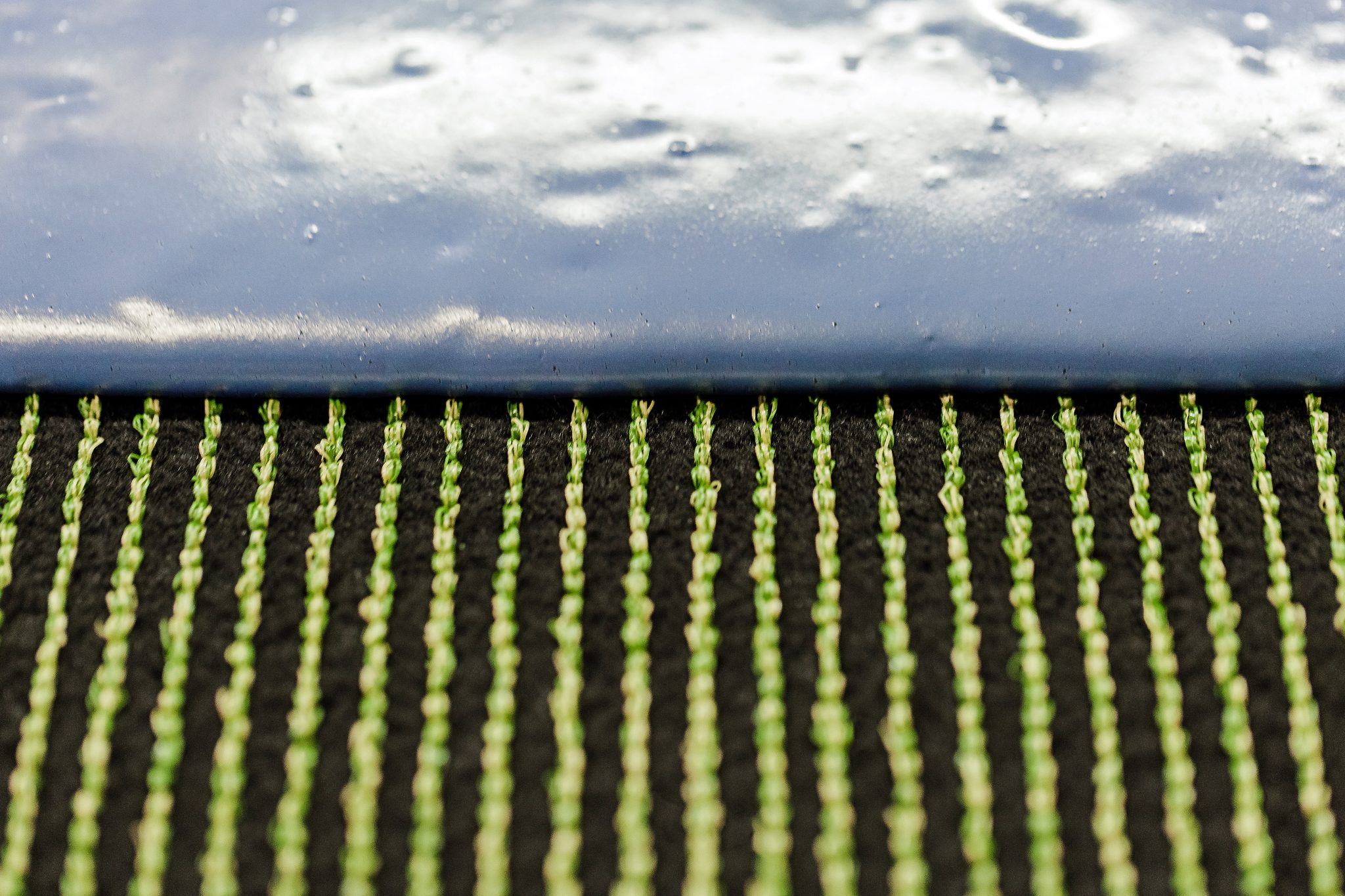A simple guide to producing synthetic grass – Backing
- 09/28/2020
By Bryn Lee
The process that ensures fibres are secured to create the finished synthetic turf, thereby completing the manufacturing process.
Types of secondary backing
The synthetic grass fibres have already been tufted into a primary backing cloth or cloths, which are loosely holding the fibres in place. The tufted rolls are transported to the backing line ready for the next stage in the process. There are two types of secondary backing that are now applied: latex or polyurethane (PU).
Equipment
A modern backing line consists of different components each playing a key role in the production of the finished turf. Most backing lines are at least 30m in length and some extend over twice this length. This depends on the sizes of the ovens used to dry the back of the turf. These ovens are controlled for heat, as a mistake in the temperature can mean the backing does not dry correctly or could mean over-cooking.
Essential to any backing line is an area where final quality checks can take place.
Method
The process starts with the unbacked turf being pulled, fibre downwards onto a flat surface where the secondary backing material is applied to the primary backing. There are different ways to achieve the same result, which ensures a full covering of the back of the tufted turf.
The turf is then pulled through a series of ovens where heat is applied to the back, to dry out the secondary backing. Some controlled heat is allowed to the fibre side of the turf, which allows the individual fibres to open up.
Drainage
As the, now backed, turf leaves the ovens it passes into an area where drainage holes are punched through the turf, at an equal distance, to ensure future, rapid drainage. From here the turf is suspended into collecting bins, ready for final inspection.
Final checks
Throughout the process there are quality checks. These include checking the consistency, application and weight of the latex or PU material that is used, monitoring the temperature of the ovens, checking the backing has dried and drainage holes are correctly applied. Final checks are essential to the finished quality and involve visual inspection and specific product tests.
Each roll is monitored as it comes through an inspection area, immediately before it is rolled up and wrapped for delivery. Here checks are made on the strength of the tuft lock, the length of the fibre, density of stitches and other quality control measurements. These are recorded in the event of a future issue.
Under artificial light it is not always possible to pick up flaws in the turf, although the inspection area is as well-lit as possible. Occasionally spot checks will include taking a complete roll outside, unrolling under natural light, and checking for product consistency, colour differences and line straightness.
Having confirmed the quality of the produced turf, the manufacturing side is complete. Next week we will look at the importance of the roll-up unit, preparation for delivery and final dispatch.






